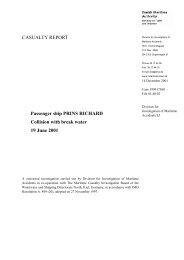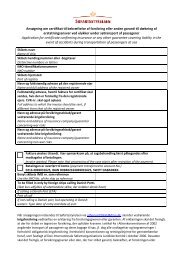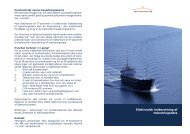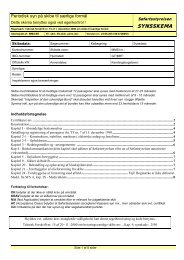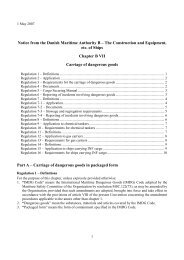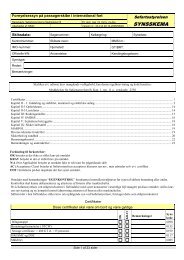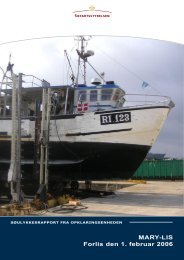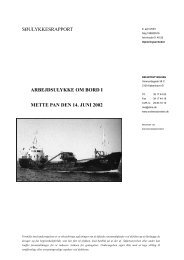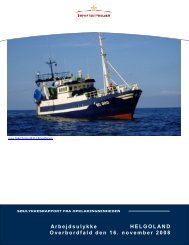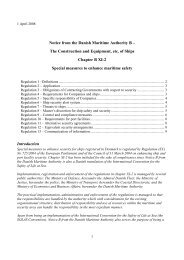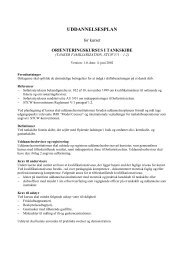kvartalsvis orientering 1 2009 - Søfartsstyrelsen
kvartalsvis orientering 1 2009 - Søfartsstyrelsen
kvartalsvis orientering 1 2009 - Søfartsstyrelsen
You also want an ePaper? Increase the reach of your titles
YUMPU automatically turns print PDFs into web optimized ePapers that Google loves.
Kvartalsvis Orientering 1/<strong>2009</strong>Quaterly Information 1/<strong>2009</strong>AIS-data from the Danish Maritime Safety Administration (see fig.4) shows theHAGLAND BONA AIS-track in the eastern part of the channel immediately prior to andthe grounded position following the collision. The shown position of BLUE BIRD in thisplot is not updated, as the BLUE BIRD position in the Danish Maritime Safety Administrationsystem was not updated since 2046. The actual time on the screen-dump onFig.4 is 20:51:06. The BLUE BIRD position shown on this plot is 05 minutes and 07seconds old.The agreed passing point is not the position recommended by local pilots. Vessels witha draught less than 5.50m are recommended to pass each other off ‘Voer anløbsbro’,which is approximately 0.9nm north of the passing position agreed between the twovessels.According to the master of HAGLAND BONA he has previously by a local pilot beenrequested to pass another vessel at this position.ConclusionThe collision between HAGBARD BONA and BLUE BIRD was caused by• The interaction between the sea bed and BLUE BIRD forced the vessel towardsthe middle of the channel. Because of the interaction, it was not possible to returnto the western part of the channel in order to pass HAGLAND BONA port toport in a safe distance.• Due to the water depths outside the channel decreasing rapidly to below 1.0min this area and the fact that the position was in immediate vicinity of a turn inthe channel, the chosen position for passing each other was not the bestchoice.• None of the two vessels had pilot on board. Local pilots would have been ableto choose the best position for passing each other and would have been awareof the risk of interaction between sea bed and the vessels.RecommendationsSince 1998 the Danish Investigation Division has registered a total of 15 groundings inthe Randers Fjord and its approaches. Three of the groundings were with pilot onboard. This indicates an area which is difficult to navigate.• Due to the difficulties when navigating Randers Fjord, the Investigation Divisionrecommends that the Danish Pilot Authority reconsiders the regulation for theuse of Pilots by vessels navigating the Randers Fjord.8 February <strong>2009</strong>The Division for Investigation of Maritime Accidents32



